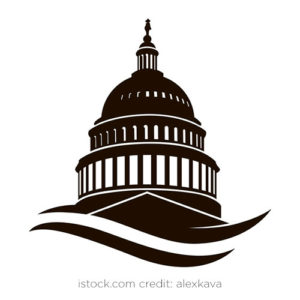The FCC was still dealing with COVID restrictions in 2021 and will continue that this year. The agency moved to a smaller space, but personnel were still working remotely in December. The FCC continues to prepare to transition its Emergency Broadband Benefit subsidy into a permanent program, to be called the Affordable Connectivity Program.
Several months after President Joe Biden re-nominated her for her third five-year term at the agency, the Senate re-confirmed Jessica Rosenworcel as an FCC Commissioner. The Senate elevated her to “Chair,” making her the first woman to lead the agency not on an interim basis. The action occurred weeks before she would have had to leave since her previous term had expired.
Senate confirmation is expected in the New Year for Biden’s other picks: Alan Davidson to head the National Telecommunications and Information Administration (NTIA) and Gigi Sohn to fill the empty Democratic slot at the FCC. However, Sohn’s confirmation is expected to be a tough slog since several GOP Senators oppose her. Ted Cruz of Texas, for example, said during her nomination hearing he doesn’t believe she can be impartial.
As for its workload, the Commission continued efforts to ensure Americans’ phone and internet connectivity were not cut off. In January 2021, Rosenworcel created a task force dedicated to fixing the FCCs broadband location maps. Those need to be updated so regulators know where to direct broadband infrastructure deployment grants. The agency anticipates the maps will be ready around mid-year.
Speaking of those grants, Congress passed Biden’s infrastructure package containing $65 billion dedicated to broadband infrastructure. NTIA will distribute the bulk of those – $48 billion. Davidson said during his confirmation hearing that NTIA would need to be “staffed up” in 2022 to develop a process to distribute those monies to states. In turn, the states would invite companies to apply for the grants. Commerce Secretary Gina Raimondo said recently the administration anticipates the money actually getting to industry sometime in 2023.
The Wireless Infrastructure Association said it worked hard to get technology neutral language included in the infrastructure bill, so that wireless broadband infrastructure deployment would not be shut out in favor of wired.
Bidding ended in November for Auction 110 for licenses in the 3.45 to 3.55 GHz band. Bidding in the clock phase exceeded $21.8 billion, placing Auction 110 among the highest grossing auctions in FCC history, according to the agency.
The Commission was still protecting communications networks from security threats in 2021. Those efforts will continue this year. It began accepting applications for the Rip & Replace reimbursement program on October 29. The Commission established the $1.9 billion program to reimburse providers of advanced communications services with ten million or fewer customers for costs incurred to remove, replace and dispose of covered communications equipment or services from their networks that pose a national security risk. Huawei or ZTE gear or services that were purchased on or before June 30, 2020 are covered in the program. The filing window closes on January 14, 2022.
The C-band auction closed in January with just over $80 billion in gross bids. AT&T and Verizon won the most licenses. Just before they were going to begin transmitting 5G on the band in December, the FAA asserted the transmissions could interfere with aviation equipment and pose a safety risk. The carriers agreed to delay using the band until January, and operate at lower power around airports nationwide for six months to give the FAA time to resolve the issue. The FAA, FCC, carriers and aviation equipment makers were in talks to develop mitigation issues in December. Rosenworcel said she had faith in the engineers, and that the issue would soon be resolved. Before the Christmas holiday, CTIA and associations representing the aviation and aerospace industries, called their on-going negotiations with the FAA and FCC productive and said the wireless industry remains on-track to launch 5G on C-band on January 5, 2022.
After President Biden and the Occupational Health and Safety Administration (OSHA) announced a federal vaccine mandate for private sector employees, NATE: the Communications Infrastructure Contractors Association, sought a public comment period. It then conducted a survey to determine how this might impact NATE members and their workers. According to the survey, NATE told OSHA, 80 percent of its members oppose a federal government COVID vaccine mandate, believing it would worsen workforce challenges they’re already facing. About 85 percent of NATE members believe some staff would resign if they’re required to get COVID vaccines, and 30 percent indicated more than half of their workers would quit.
By Leslie Stimson, Inside Towers Washington Bureau Chief





Reader Interactions